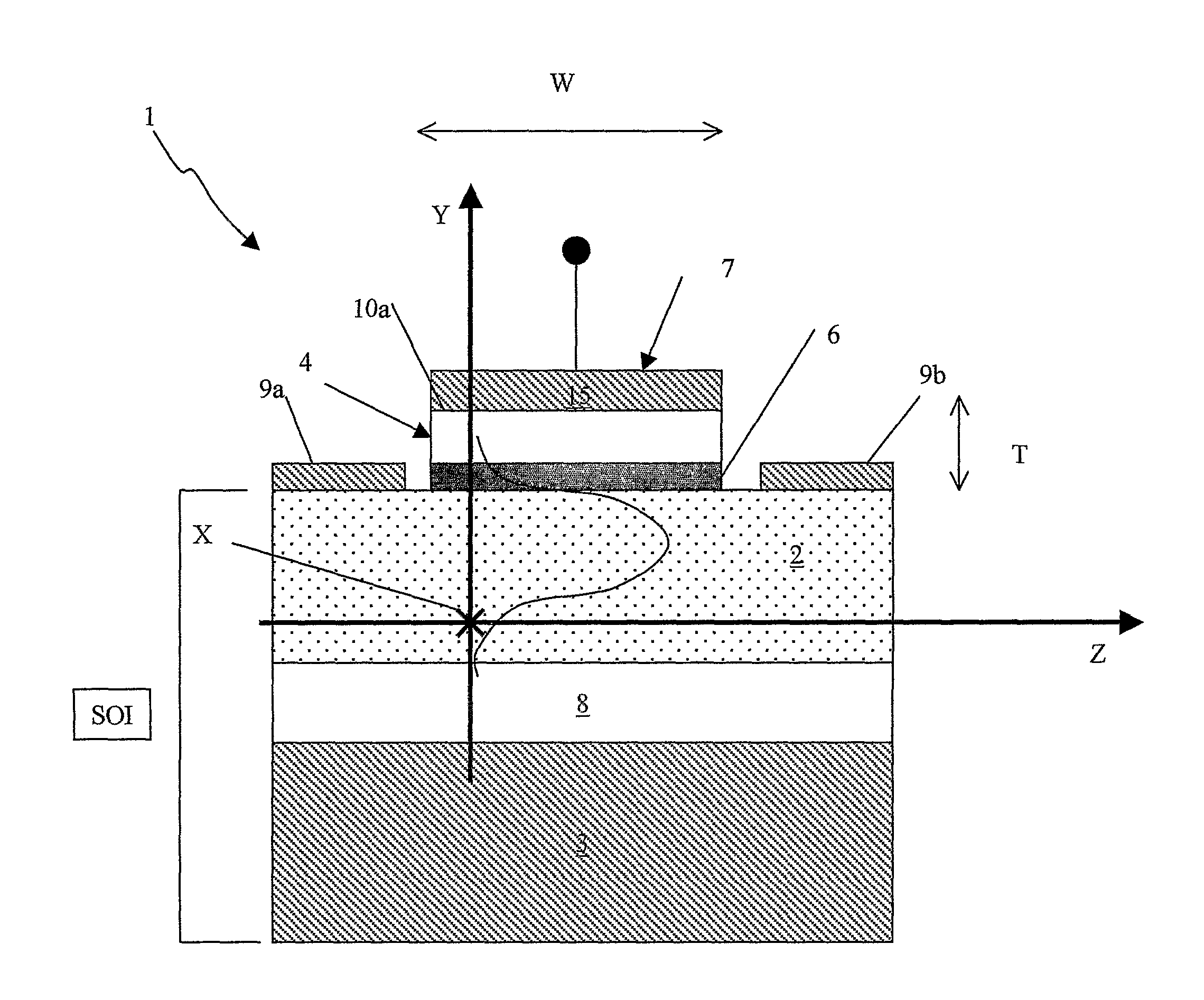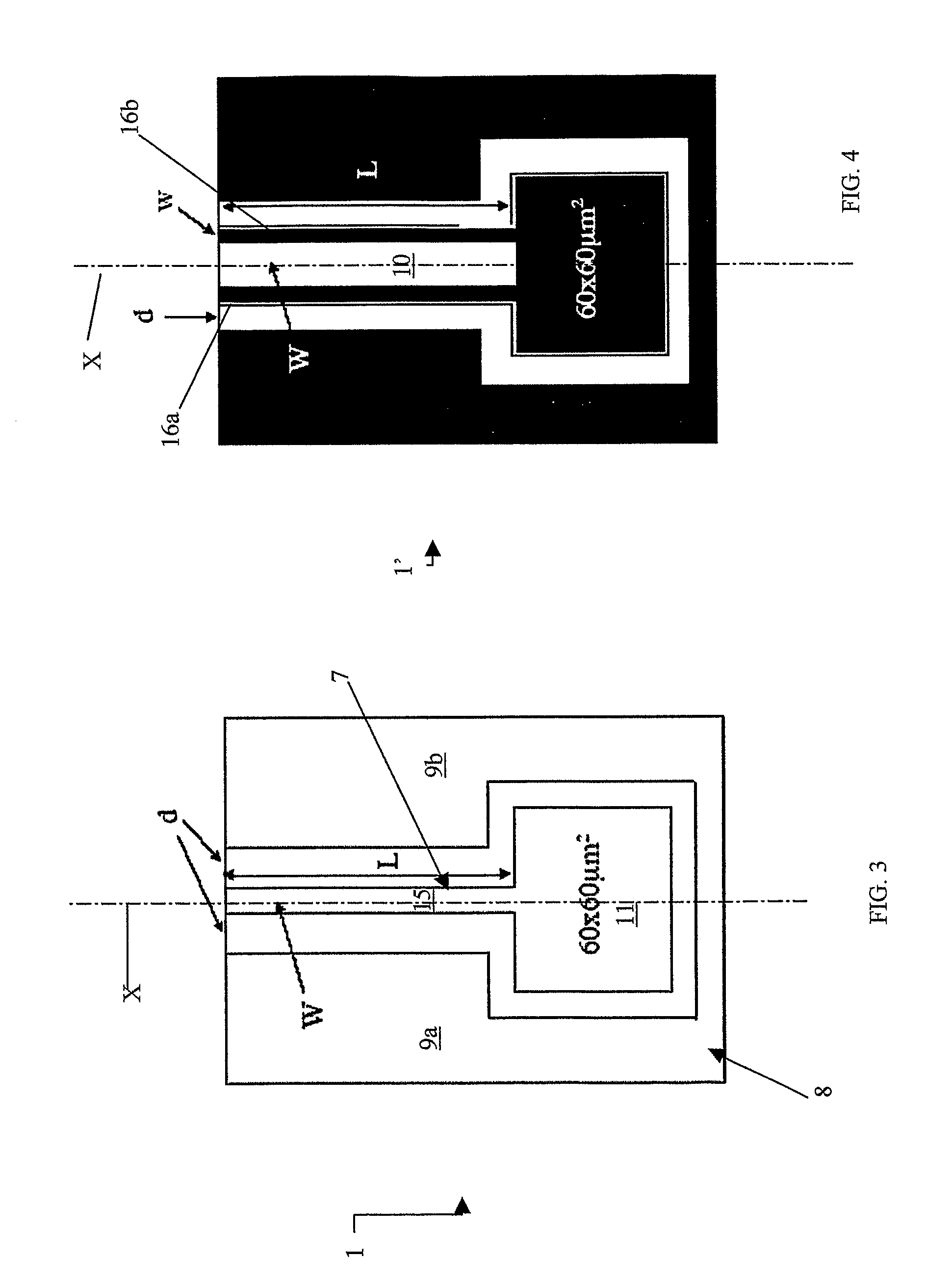Photodetector in germanium on silicon
a technology of germanium and silicon, applied in the field of photodetectors, can solve the problem of relative small thickness of the active layer, and achieve the effect of reducing metal losses
- Summary
- Abstract
- Description
- Claims
- Application Information
AI Technical Summary
Benefits of technology
Problems solved by technology
Method used
Image
Examples
example 1
[0089]A Bond and Etch-back SOI substrate with 2 μm-thick n-type Si overlayer (2-3 Ωcm) and 1.5 μm-thick SiO2 insulator has been used. The samples were cleaved, but the input facets were un-polished.
[0090]Polycrystalline Ge film was grown by thermal evaporation using a 99.999%-purity commercial source and a tungsten crucible in vacuum with a background pressure of 10−6-10−7 Torr. The substrate was heated by a massive copper-plate, temperature-stabilized at 300° C. by a thermo-coaxial cable. The Ge film thickness T was selected equal to 120 nm. Before the introduction into the vacuum chamber, the SOI substrate was chemically cleaned at room temperature by dipping them into buffered hydrofluoric acid (BHF) for 10 s. Poly-Ge mesa 10 was defined by lithography and selective wet-etching.
[0091]Aluminum contacts were subsequently deposited by thermal evaporation and defined by standard lithography. The square pad for wire bonding is of about 60×60 μm2.
[0092]Several devices has been fabricat...
PUM
 Login to View More
Login to View More Abstract
Description
Claims
Application Information
 Login to View More
Login to View More - R&D
- Intellectual Property
- Life Sciences
- Materials
- Tech Scout
- Unparalleled Data Quality
- Higher Quality Content
- 60% Fewer Hallucinations
Browse by: Latest US Patents, China's latest patents, Technical Efficacy Thesaurus, Application Domain, Technology Topic, Popular Technical Reports.
© 2025 PatSnap. All rights reserved.Legal|Privacy policy|Modern Slavery Act Transparency Statement|Sitemap|About US| Contact US: help@patsnap.com



